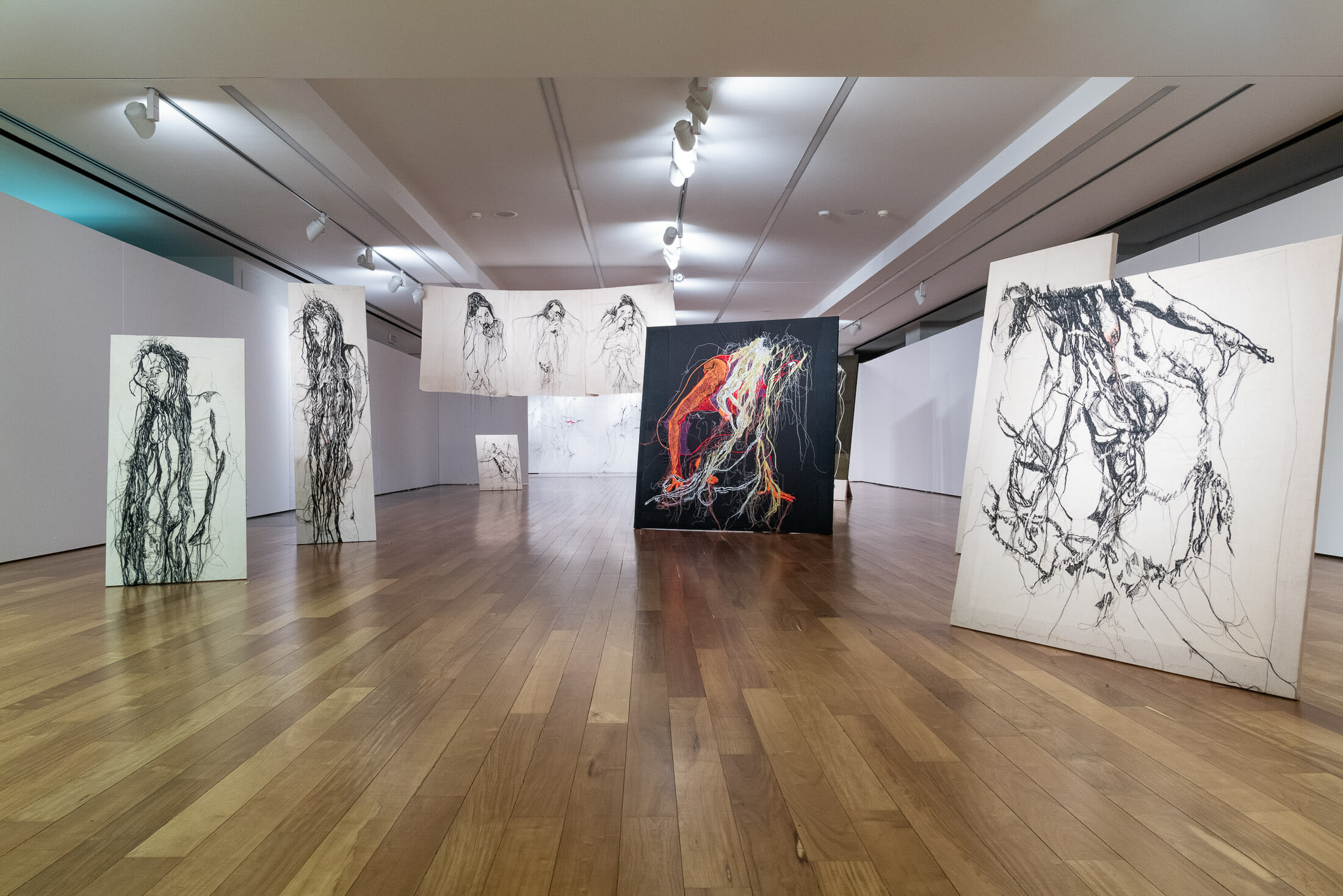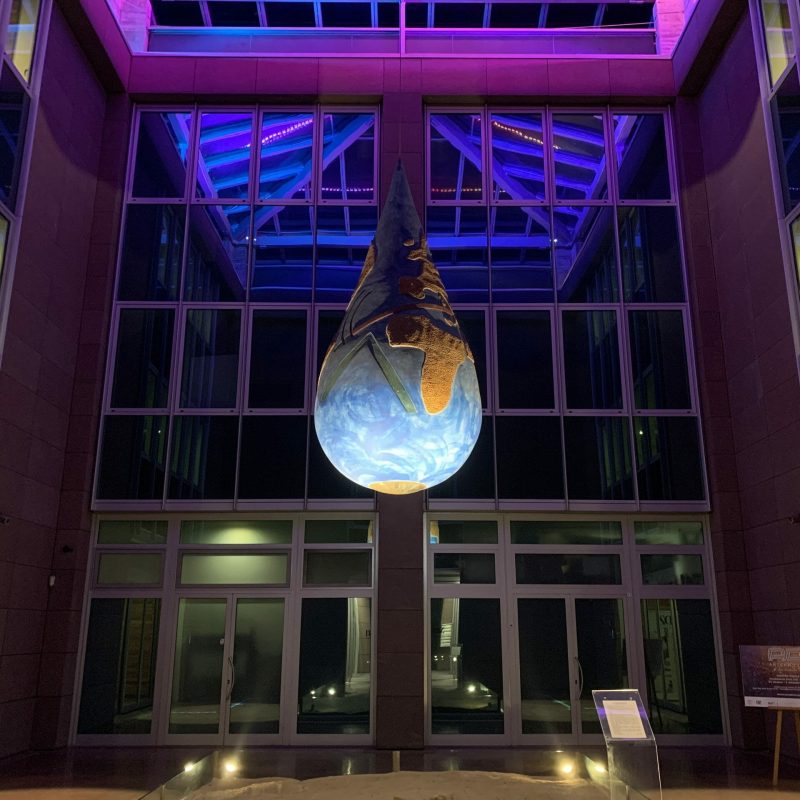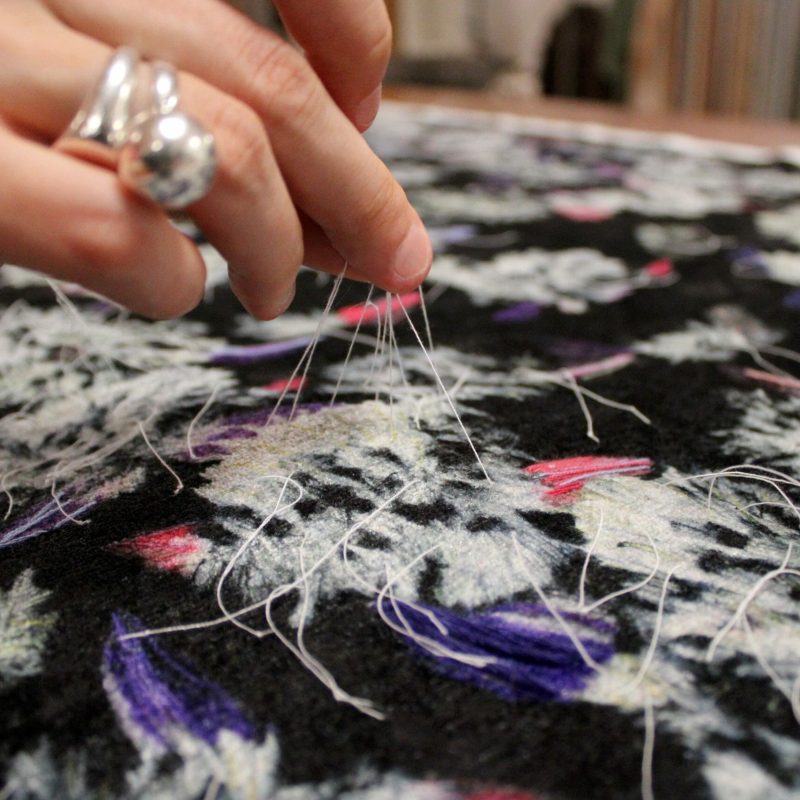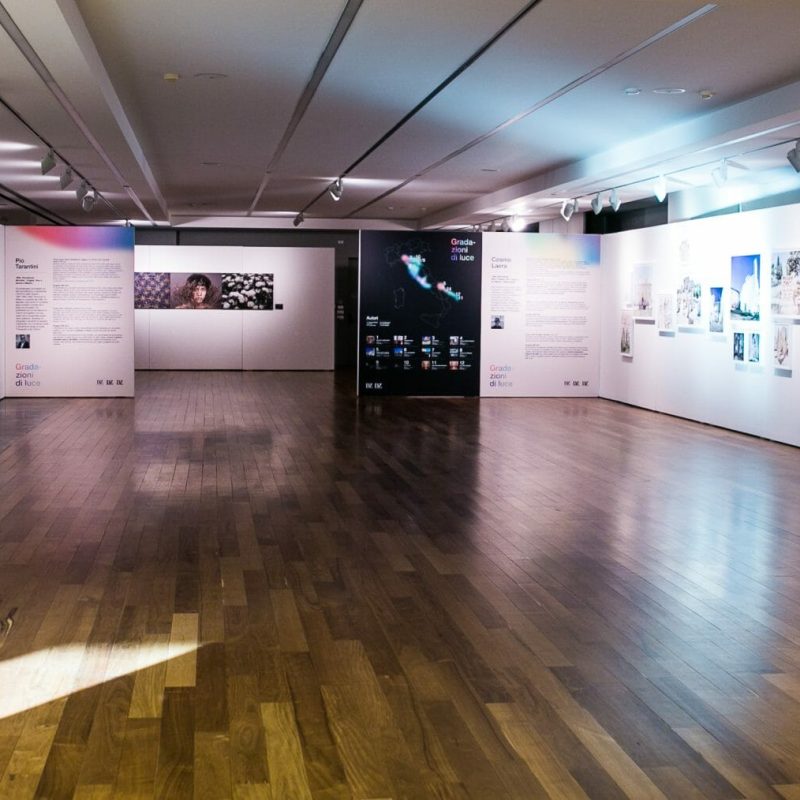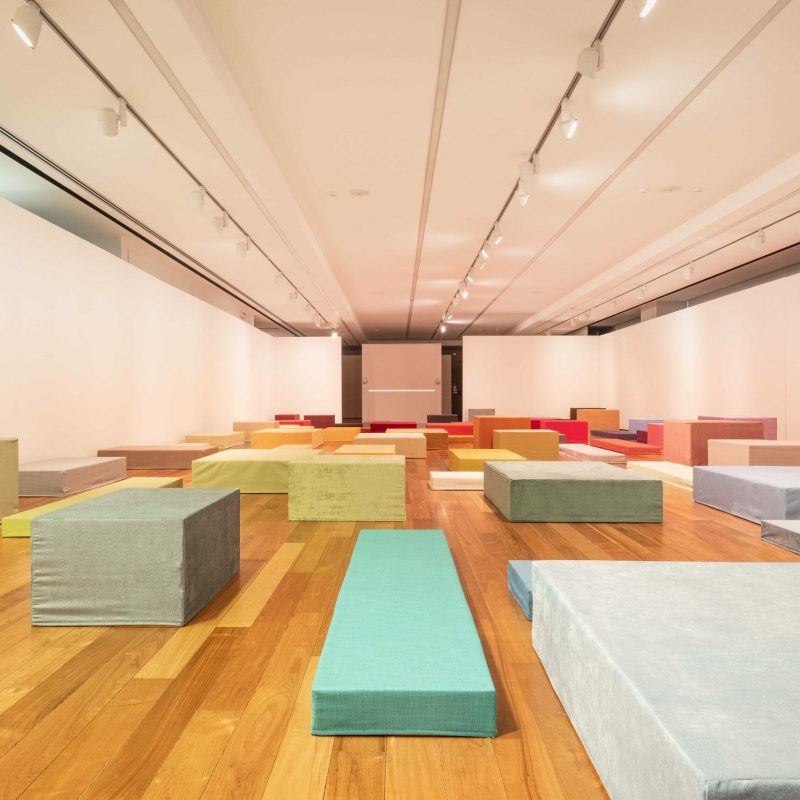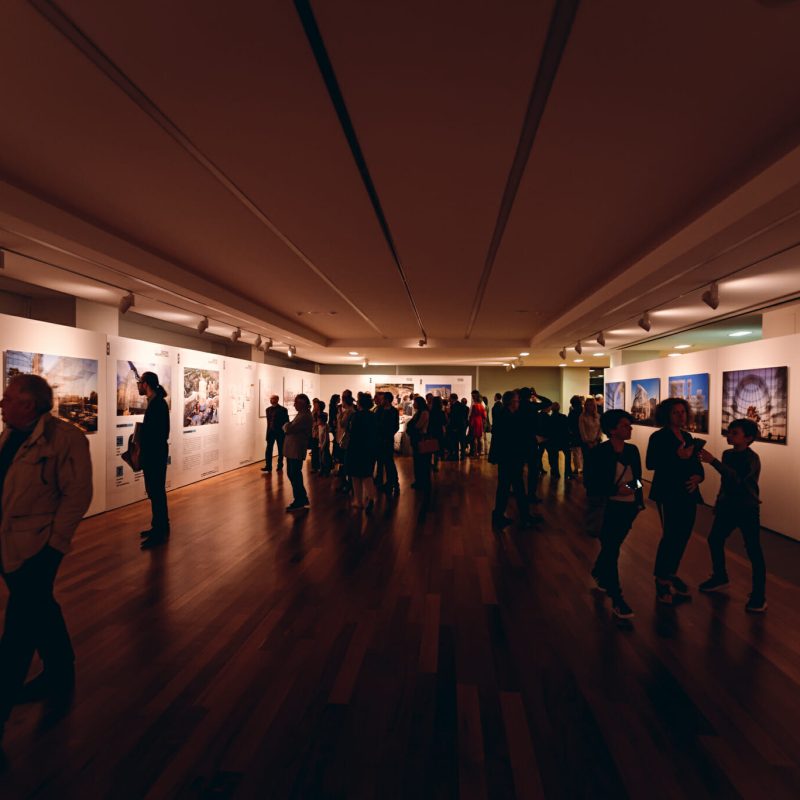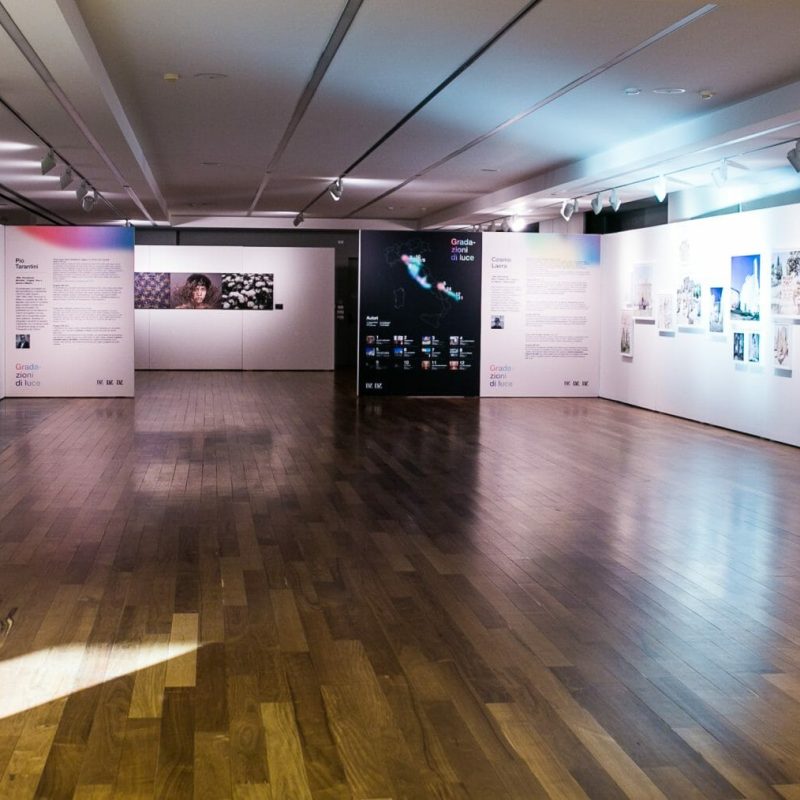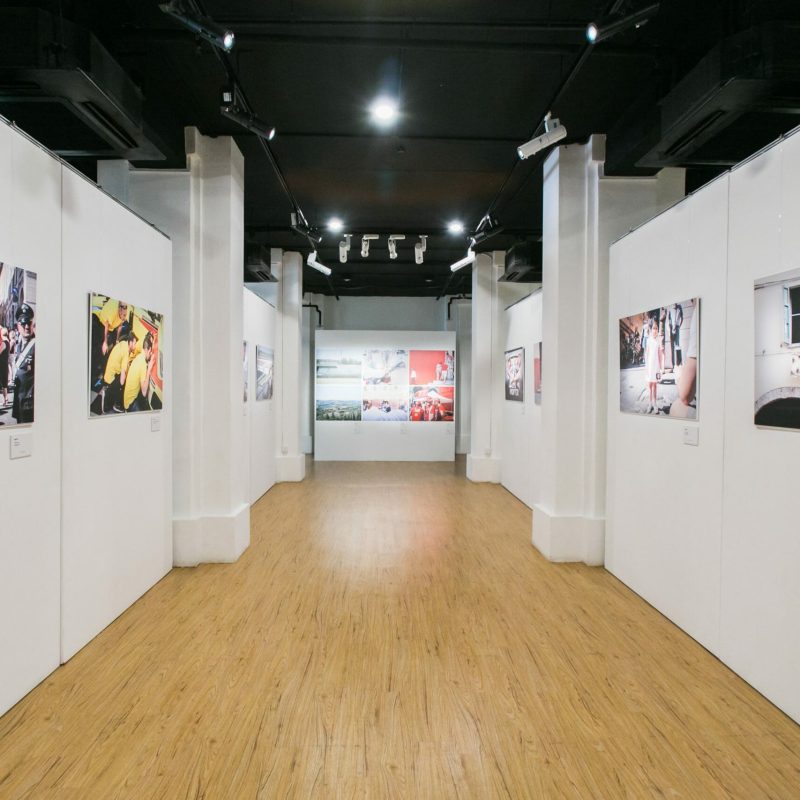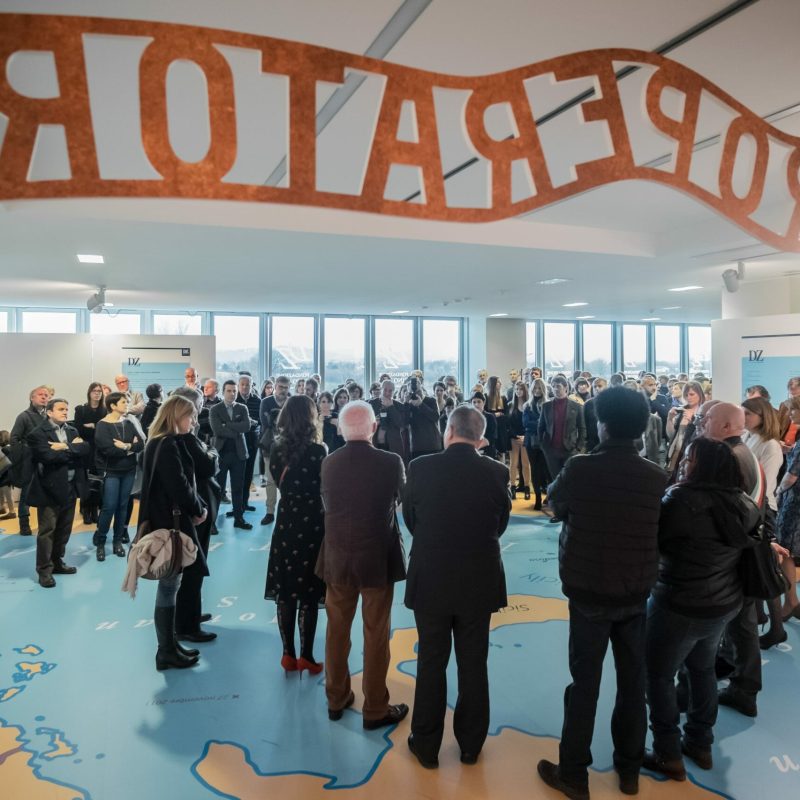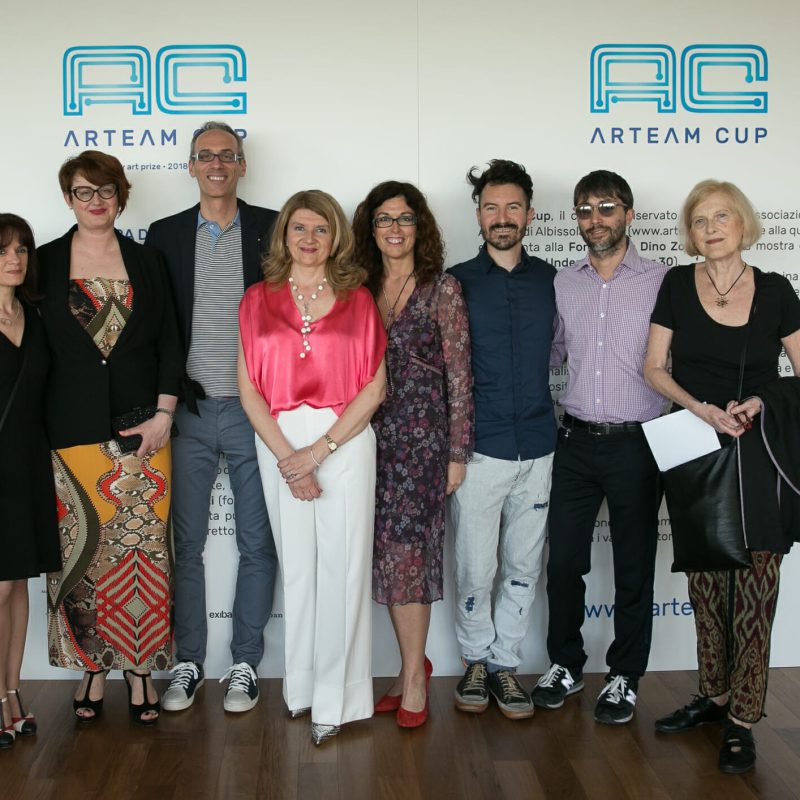ENTREPRENEURSHIP, ART AND CULTURE: DINO ZOLI FOUNDATION’S SUCCESSFUL MIX
*Featured photo: 2020, Profili cuciti di santità, Lucia Bubilda Nanni
Dino Zoli’s business venture began in 1972. In half a century, the company of the same name has grown to become an international Group while maintaining the values that made it a solid point of reference for its many employees and the territory. In 2007, based on the same values, the Dino Zoli Foundation was founded, a project to promote Italian culture within and beyond the national borders and the cultural driving force behind the Group’s business activities.
Monica Zoli and her brother Marco are the second generations to continue the family’s business activities. This extended interview tells us about the Foundation’s commitment, projects, and initiatives.
The successful entrepreneurial experience of the Dino Zoli group has led to the creation of a Foundation supporting and promoting contemporary art. How did the idea come about, and why did you choose to target this area of culture?
Contemporary art has always been a personal interest; then, with the establishment of the DZ DINO ZOLI ARTE gallery, it became a field of work. The Foundation was established in 2007 to complement the company’s commercial activity as a prestigious exhibition venue and non-profit institutional subject. Over time, we have channelled into the Foundation, more organically, all the numerous connections with art that have developed within the Group’s companies until it has become a point of reference for the communication of each activity’s creative element.
What are the Foundation’s main activities?
We organise 2/3 exhibition projects per year mainly related to two strands, that of the textile world and that of light supported respectively by DINO ZOLI TEXTILE and DZ ENGINEERING.
As part of the WHO’S NEXT project, we direct our attention and resources towards emerging artists, selecting at least one per year and supporting him or her in various ways, from an artist residency to the production of a solo exhibition.
In addition, many fringe events are organised alongside the exhibitions: workshops, presentations, and talks. The Foundation’s activity is really vibrant.
The Foundation supports and collaborates on various projects. How do these collaborations develop? How do you select the invited artists? Do the different meetings, events, and exhibitions take place on the Foundation’s premises or do you also carry out your activities in other institutional or private venues?
Over the years, the network of collaborations has grown in diversity and strength while remaining open to new opportunities. Each contact is evaluated by an internal committee under Nadia Stefanel’s artistic and curatorial direction. They determine which projects should be implemented and define the relevant planning. However, we are a very flexible and agile structure driven by great enthusiasm and the desire to expand our network of relationships and our horizons. We are indeed very proud when our projects are shown in other venues, both nationally and internationally.
In the residency and the WHO’S NEXT programme, there is a significant presence of artists experimenting with the languages of fibre art. Is the interest in this area of experimentation rooted in Dino Zoli’s textile activity?
Of course, Dino Zoli Textile, celebrating its 50th anniversary this year, is the Group’s leading company and one of the main driving forces behind the Foundation’s projects. Our product is the fabric used to cover upholstered furniture. Design, trends, social and cultural aspects are focal points that must always be kept in mind to develop new and creative proposals. Collaboration with artists, art academy and art school students provides the company with essential opportunities for confrontation, contamination and study in multi-directional exchange relationships.
In your experience, is art and business a successful combination?
I would say yes, in so many ways. First, art is a language of universal understanding, allowing us to tell the story of how creativity is present in our commercial companies. It also represents an identity element that define us and that we share with all our collaborators; finally, it is an indirect stimulus to research. Over time, thanks to residencies, productions and exhibitions, we’ve also established our role in supporting a sector in need.
How have the Foundation’s activities grown and changed over time?
The one thing that has changed over time is the fluidity of the project’s implementation. Furthermore, there has been a constant growth in the network of relationships and connections that we carefully cultivate. The only drawback is that the number of projects we manage to implement is much smaller than those that deserve support.
What is the relationship between the company, the Foundation and the territory?
Very close, one of the reasons we set up the Foundation was precisely this desire to channel into a single core all the actions and interactions that our companies have with the various players in the local territory. We feel deeply connected with our roots, which we keep strong even when we address, for example, our foreign stakeholders.
Does the Foundation have a permanent collection open to the public?
The permanent collection is substantial and constantly expanding. Despite the Foundation’s 1,500 square metres, a comprehensive exhibition is impossible. Still, according to the project, we insert selected works to make them accessible to the public. In the current show, Arte e Impresa – Dino Zoli, 50 years of activity, the curator Nadia Stefanel has chosen a selection that best represents my father’s relationship with art and our activities. These include the textile works created during the artist residencies at Dino Zoli Textile by Elena Hamerski and Loredana Galante.
How do you assess the Foundation’s activities over these years?
I believe we have done an excellent job in consolidating and increasing the credibility necessary to move forward. It is a passionate undertaking, and we indeed have succeeded in conveying this powerfully, with a team effort gradually being extended.
What are your future plans?
In the immediate future, we are planning a new residency at Dino Zoli Textile with Elena Bellantoni, a project that implies a different involvement of our company. Elena is a video artist, performer, photographer, and sculptor, so what will emerge from this residency is open and to be discovered. We plan to display the result in a specific exhibition in late October. We’ll keep focusing on the textile medium for the second part of next year; we are embarking on an interesting collaboration with an important Indian private foundation based in Calcutta. Textile-related contemporary art becomes a tool for delving into different and distant societies and cultures, but we will also discover remarkable similarities. I am sure of it.
